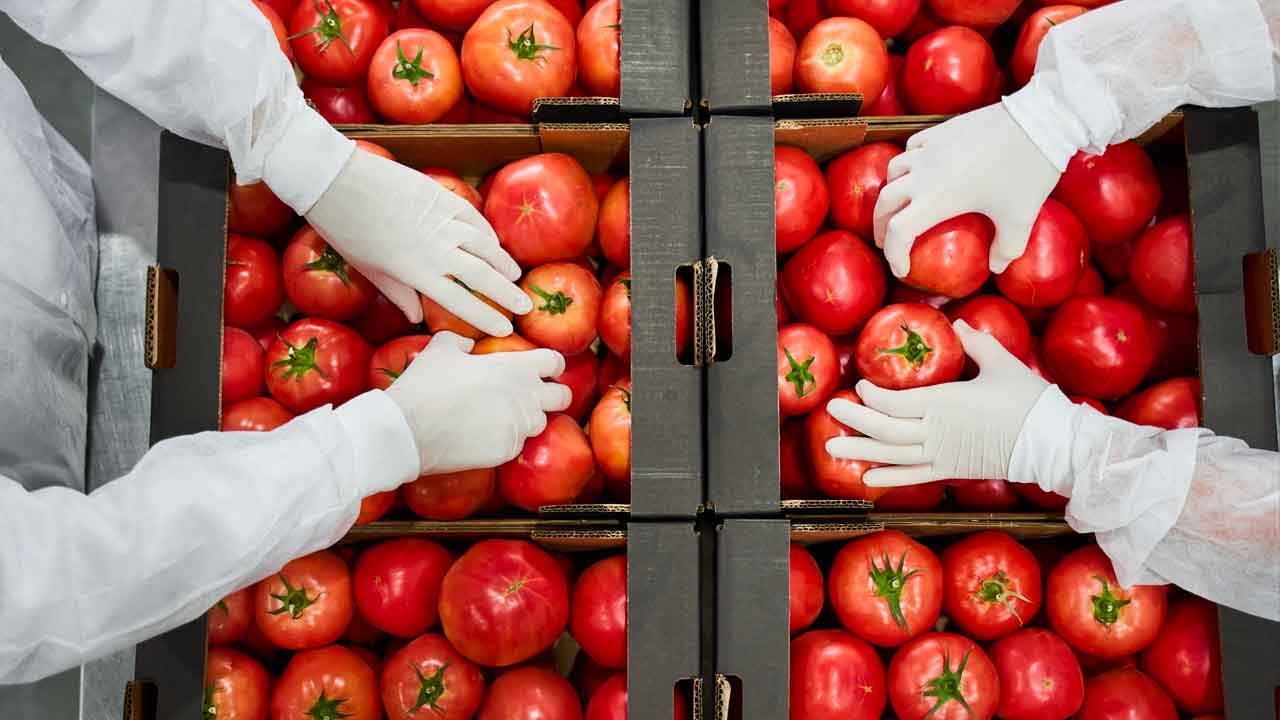Waste is an unavoidable byproduct of the manufacturing process
Making the Most of Food Waste
Consider the parts of food that are typically discarded during the manufacturing process. As food and beverage manufacturers, we tend to exclude elements that are traditionally unpalatable, visually unappealing, or nutritionally hazardous from our products. Things like fruit cores, animal bones, and hard shells usually can’t be incorporated into processed foods for various reasons: consumer preferences, health and safety legislation, etc.

Waste is an unavoidable byproduct of the manufacturing process
To refine resources into something of value to a consumer, certain elements of that resource need to be stripped away. For many manufacturers, this means generating piles upon piles of unusable, non-renewable refuse that must be discarded. Food and beverage manufacturers are in an interesting position, though – as processors of edible goods, the waste generated by their activities isn’t unusable or non-renewable, and consumers aren’t typically averse to it. The repurposing of excess materials created by food processing certainly isn’t a new idea but, in today’s age of sustainability and environmental awareness, the practice is now being given serious reconsideration by a diverse variety of manufacturers. Let’s examine the use of food waste as a manufacturing resource and determine whether or not it can serve as a valuable asset to our businesses.
Before we begin reviewing how food waste is generated, let’s ensure we have a strong understanding of what food waste is.
For food and beverage manufacturing, and as defined by the Harvard School of Public Health, food waste is excess material that occurs as a result of processing and that is still viable for usage by consumers in some form. Food waste is not excess that is toxic, hazardous, or otherwise non-consumable. Discarded coffee grounds are food waste, for example, but mouldy banana skins are not. It’s important to recognize what the “waste” in “food waste” implies: food that could be consumed (or otherwise utilized), but willfully isn’t. Under these criteria, food waste remains a viable resource to its manufacturing entity, even after being stripped of its other components. Remember that, in food and beverage manufacturing, “waste” means “an unused surplus”, not “garbage”, and you may begin to realize this resource’s potential.
An idea recently gaining traction in food and beverage manufacturing is “upcycling”: the practice of re-using food waste for various processes.
Upcycling has become a popular concept for several reasons — in addition to its eco-friendliness, the re-use of waste eliminates costly disposal fees, and maximizes the value of food and beverage manufacturers’ resources. Through events like Anthesis Provision’s annual Upcycled Food Fest , consumers are rapidly becoming aware of upcycling as well. Judging by the success that this event and others like it have seen, upcycling food waste may well become the sector’s next big trend. Many organizations have also chosen to use their participation in upcycling processes as promotional material, and it’s clear to see why: upcycling demonstrates businesses’ willingness to reduce food waste as much as possible, and positions them as responsible, environmentally-aware organizations. If upcycling activities are marketed effectively to manufacturers’ consumer bases, they can serve as critical competitive advantages in a culture of environmental preservation.
Consider the parts of food that are typically discarded during the manufacturing process. As food and beverage manufacturers, we tend to exclude elements that are traditionally unpalatable, visually unappealing, or nutritionally hazardous from our products. Things like fruit cores, animal bones, and hard shells usually can’t be incorporated into processed foods for various reasons: consumer preferences, health and safety legislation, and established formulas make these parts of food unsuitable for products meant to be ingested. Today’s food and beverage processing machinery automatically removes these items from the production line. If they are not re-introduced at a later part of the process or used as input materials by another business for other types of product, they go entirely unused, thereby becoming waste. According to a 2019 article from The Globe and Mail citing the most recent study on the subject, Canadian manufacturers generate about 4.63 million tonnes of food waste per year, which is about 13% of the national total. This makes food and beverage manufacturers the third-largest generator of food waste in the country, direly harming Canada’s environment — and these businesses’ bottom lines.
Let’s take another look at what food waste is typically comprised of: rinds, peels, shells, bones, cores, stems…
Interestingly, these different forms of waste have several components in common, which allows us to make certain generalizations. On the whole, food waste seems to be relatively hard, rough, and dry, whereas the parts of food that can be easily processed are relatively soft, smooth, and moist, making them ideal for human consumption through eating and drinking. Keep in mind that many foodstuffs with the qualities of food waste are typically consumed, but only after further processing. For example, rinds and peels can become zests and flavourings, shells, and bones have long been used to create gelatin, and cores and stems are common ingredients in natural oils. A wide variety of processed food products that use items typically thought of as waste exists in the Canadian marketplace today, and many of them (seasonings, condiments, sauces, etc.), belong to multi-billion-dollar industries. Food and beverage manufacturers likely already have the equipment and processes needed to enter these industries — and, by utilizing their food waste, they have the resources to do so as well.
There’s no need to limit one’s utilization of food waste to foodstuffs themselves either — many kinds of food waste are exceptionally useful as elements of non-consumable goods. Foods are a common ingredient in various household items (soaps, medicines, aromatics, etc.), and consumers are already familiar with their inclusion in contexts outside of dining. While food and beverage manufacturers may not have the capabilities to process food waste into non-consumable items, a wide range of manufacturing businesses in other industries certainly do. Approaching these organizations with partnership opportunities based on food waste is an excellent way to develop vital in-sector connections. Many manufacturers lack the time or resources necessary to build strong working relationships with their peers. Excellence in Manufacturing Consortium (EMC), which maintains Canada’s largest manufacturer network, is well-suited to facilitating these connections through access to a team of Manufacturing Consortium Managers experienced in the industry and in establishing mutually-beneficial partnerships. Through EMC’s Opportunities Alerts service, manufacturers can even advertise their food waste for purchase by other businesses! Foodstuffs are commonly-used materials in a multitude of manufactured goods, and food and beverage manufacturers would do well to recognize their value in the greater manufacturing space.
Livestock!
While not all food waste can be repurposed for products targeted to humans, there is another market that’s more than happy to consume waste as-is: livestock! A steady source of animal feed is necessary for prosperity in meat and produce farming, and Canadian food and beverage manufacturers generate high-quality meals for farm animals on a gigantic scale. The World Wildlife Fund has identified food waste as a valid source of sustenance for several species of farm animals and, as long as farmers’ demands for healthfulness in this waste are met, food and beverage manufacturers will have a sustainable method of eliminating excess foodstuffs in a mutually-beneficial way. This method of disposing food waste is exceptionally efficient for food and beverage manufacturers — many businesses in this industry already have strong working relationships with the agricultural sector, and can use this contribution of potential animal feed to strengthen their shared bonds. Farmers are an essential part of the food and beverage ecosystem and, by supporting them in procuring a critical resource, food and beverage manufacturers can showcase their own businesses’ value.
It’s true that certain kinds of food waste cannot reasonably be re-utilized, upcycled, or integrated into other products. As biological materials, most forms of foodstuff eventually rot, solidify, or degenerate to the point of toxicity. If all else fails, though, there is one final use for food waste that is no longer safe for human or animal usage: compost! Even if food waste isn’t fit for consumption or further production, the inherent biodegradability of all foodstuffs makes using them for compost an ideal disposal method. Compost — a natural fertilizer necessary for the continued growth of healthy plant life — can be created from most forms of food waste. By generating it on a facility-sized scale, food and beverage manufacturers will be able to display their dedication to the environment in a tangible, quantifiable way. The Government of Canada offers several resources that food and beverage manufacturers can use to begin integrating composting processes into their activities and provides various tools and programs to these businesses for making these operations easier.
As food and beverage manufacturers, we understand that eliminating waste from our processes entirely will never be a feasible possibility. Fortunately, food waste is one of the most versatile forms of excess in the manufacturing industry and, if we utilize it effectively and proactively, it can reap a vast array of operational and financial benefits to our businesses. With new legislation surrounding environmental sustainability being passed every year, the elimination of food waste in an ecologically-conscious manner may become mandatory. By putting upcycling procedures in place now, we can gain significant competitive advantages. The usage of food waste isn’t just a smart idea in terms of a business’s environmental impact though — it can open additional revenue streams, strengthen the bonds between manufacturers, and demonstrate an organization’s progressiveness to a consuming public. Start making the most of your business’s food waste today, and you may find this excess to be one of your greatest resources!
Are you a food and beverage manufacturer looking to empower your business’s practices, knowledge, and professional relationships? A membership with EMC is exactly what you need! Learn about the benefits of an EMC membership now and discover the value of Canada’s largest manufacturer network!





